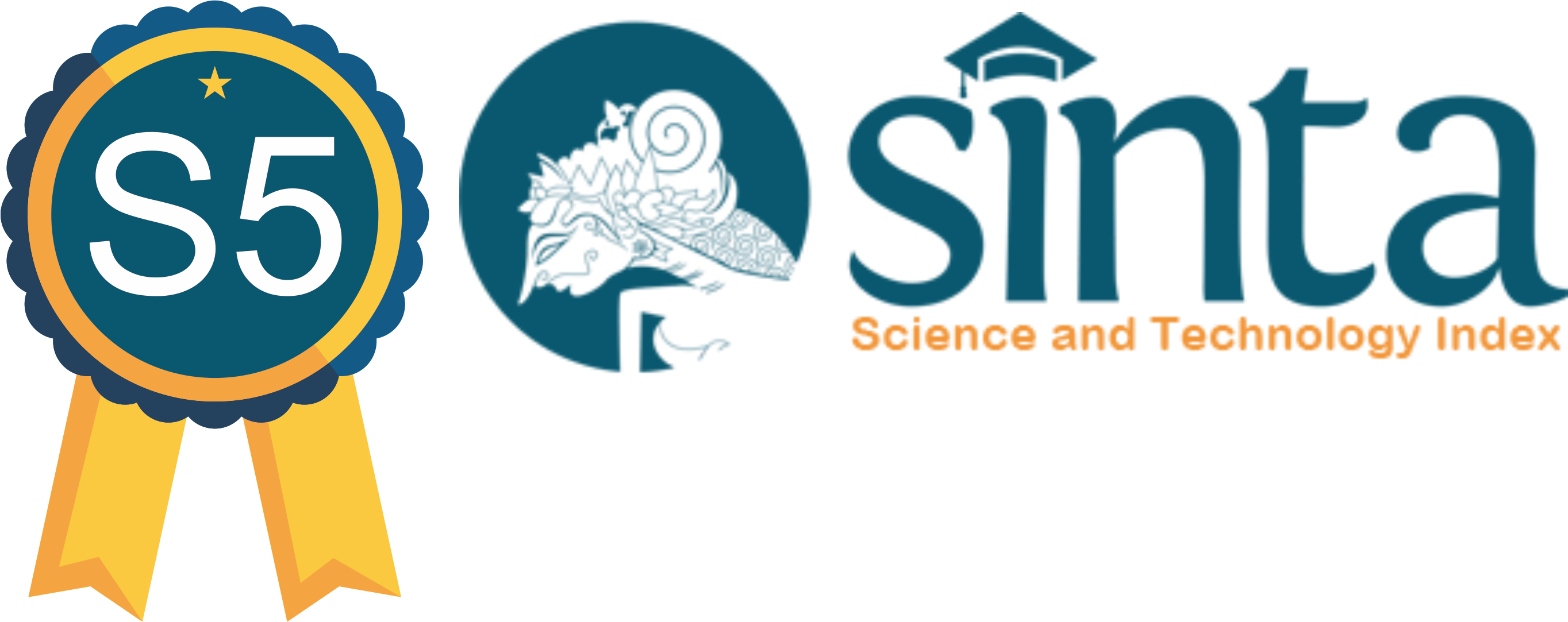An Overview of Life Gratitude on Ex-Prisoner Adolescents
Abstract
Adolescence is a very important and critical part of an individual's development. This is because, in the stages of adolescent development, it is often marked by an identity crisis which causes an adolescent to be very vulnerable to conduct behavior that is not following prevailing norms and rules, such as deviant behavior. Adolescents who are found guilty according to the applicable law will be placed and fostered at the Special Development Institution for Children (LPKA) and referred to as Correctional Students (Andikpas). After serving a criminal period, adolescent ex-prisoner will come out and live again in society. However, this is not easy due to environmental resistance and the difficulty of carrying out social reintegration. On the other hand, this brings its lessons for adolescent ex-prisoners so that they can be grateful by seeing life more positively. This paper will discuss the different and unique overview of life gratitude of ex-prisoner adolescents. The discussion is hoped to be able to provide knowledge related to the gratitude of life and adolescent ex-prisoners.
Downloads
References
Azani. (2012). Gambaran Psychological Well-Being Mantan Narapidana. Jurnal Empathy. Vol, 1. Fakultas Psikologi Universitas Ahmad Dahlan.
Ciarrocchi, J. W., Dy-Liacco, G. S. and Deneke, E. (2008) Gods or rituals? Relational faith, spiritual discontent, and religious practices as predictors of hope and optimism. Journal of Positive Psychology, 3(2): 120–36.
Diah,I. (2019). Pengaruh rasa syukur, konsep diri, dan dukungan sosial terhadap optimisme narapidana remaja di lembaga pemasyarakatan. Skripsi. Fakultas Psikologi Universitas Islam Negeri Syarif Hidayatullah Jakarta.
Emmons, R. A. (2007). Thanks: how the new science of gratitude can make you happier. Boston: Houghton Mifflin Company.
Froh, J.J., Kashdan, T.B., Ozimkowski, K.M., & Miller, N. (2009). Who benefits the most from a gratitude intervention in children and adolescence? Examining positive affect as a moderator. The Journal of Positive Psychology, 4, 408-422.
Haryanto. H,dkk (2016). Syukur sebagai sebuah pemaknaan. Jurnal Psikologi Vol 18 No. 2, Agustus 2016. Universitas Paramadina
Irawan, A. (2011). Resosialisasi narapidana anak berkaitan dengan efektivitas pola pembinaan narapidana di Lembaga Pemasyarakatan Anak: Studi kasus Lembaga Pemasyarakatan Anak Kelas II-B Tanjung Pati Sumatera Barat). Padang: Program Pascasarjana Ilmu Hukum Universitas Andalas. Online Journal. Retrived from:http://pasca.unand.ac.id/id/wpcontent/uploads/2011/09/RESOSIALISASI-NARAPIDANA.pdf. Accessed on 3 December 2020.
KBBI, 2020. Kamus Besar Bahasa Indonesia (KBBI). [Online]. Retrived from:: https://kbbi.web.id/syukur. Accessed on 20 January 2020.
KBBI, 2020. Kamus Besar Bahasa Indonesia (KBBI). [Online]. Retrived from:: https://kbbi.web.id/narapidana. Accessed om 25 August 2020.
Listiyandini, R, A., Nathania, A., Syahniar, D., Sonia, L., & Nadya, R. (2015). Mengukur rasa syukur: pengembangan model awal skala kebersyukuran versi Indonesia. Jurnal Psikologi Ulayat, 2 (2), 473-496.
Mantiri, V.V. 2014. Perilaku menyimpang dikalangan remaja di Kelurahan Pondang, Kecamatan Amurang Timur Kabupaten Minahasa Selatan. Journal volume III, No. 1 Tahun 2014.
Maulidah,I.L. (2016). Kebersyukuran dan kebermaknaan hidup pada penderita jantung koroner. Psycho idea, Tahun 14,No.2, Juli 2016. ISSN 1693-1076
McCullough, M. E., Emmons, R. A., & Tsang, J. A. (2004). Gratitude in intermediate affective terrain: Links of grateful moods to individual differences and daily emotional experience. Journal of Personality and Social Psychology, 86(2), 295-309.
McCullough, M.E., Emmons, R.A., & Tsang, J. (2002). The grateful disposition: A conceptual and empirical topography. Journal of Personality and Social Psychology, 82, 112-127
Peterson & Seligman. (2004). Character strength and virtues: A handbook and classifications. New York: Oxford University Press
Santrock, John W. (2007). Remaja. Jakarta: Erlangga.
Snyders, C.R., Lopez, Shane J. (2005). Handbook of Positive Psychology. Newyork:: Oxford University Press.
Sulistyarini, Rr Indah Ria. (2010). Pelatihan Kebersyukuran Untuk Meningkatkan Proaktif koping pada Survivor Bencana Gunung Merapi. Yogyakarta: Direktorat Penelitian dan Pengabdian Masyarakat Universitas Islam Indonesia.
Sumarno,A. (2017). Faktor-faktor penyebab perilaku menyimpang pada remaja. Online Journal. Retrived from:http://Elearning.Unesa,ac.id/myblog/AlimSumarno/FaktorFaktorPenyebabPerilakuMenyimpangPadaRemaja. Accessed on 8 February 2020.
Toussaint, L., & Friedman, P. (2009). Forgiveness, gratitude, and wellbeing: The mediating role of effect and beliefs. Journal of Happiness Studies, 10, 635-654.
Utami, A.R. (2014). Gambaran self esteem narapidana remaja berdasarkan klasifikasi kenakalan remaja. Studi deskriptif mengenai self esteem pada narapidana remaja di Lapas Anak Bandung dan Lapas Wanita Bandung. Fakultas Psikologi, Universitas Padjajaran. Online Journal. Retrived from: http://pustaka.unpad.ac.id/wp-content/uploads/2014/11/Jurnal-Self-Esteem-Narapidana-Remaja-Berdasarkan-Klasifikasi-Kenakalan-Remaja.pdf . Accessed on 25 August 2020.
Watkins, P.C., Woodward, K, Stone T, & Kolts, R.L. (2003). Gratitude and happiness: Development of a measure of gratitude, and relationship with subjective well-being. Social behavior & personality: An International Journal, 31, 431-452
Wibisono,M. (2017). Hubungan antara kebersyukuran dan kesejahteraan subjektif pada mahasiswa. (Naskah publikasi). Universitas Islam Indonesia, Fakultas Psikologi dan ilmu sosial budaya program studi psikologi.
Wood A. M., Joseph S., & Maltby J.. (2009). Gratitude Predicts Psychological Well-Being Above The Big Five Facets. Personality and Individual Differences, 46, 443-447.
Copyright (c) 2021 Paula K. W. K. Lado, Marselino K. P. Abdi Keraf, Apris A. Adu, Dr., Indra Yohanes Kiling

This work is licensed under a Creative Commons Attribution-ShareAlike 4.0 International License.
Journal of Health and Behavioral Science (JHBS) is licensed under a Creative Commons Attribution-ShareAlike 4.0 International License. You are free to copy, transform, or redistribute articles for any lawful purpose in any medium, provided you give appropriate credit to the original author(s) and JHBS, link to the license, indicate if changes were made, and redistribute any derivative work under the same license. Copyright on articles is held by the authors. By submitting to JHBS, authors grant any third party the right to use their article to the extent provided by the Creative Commons Attribution-ShareAlike 4.0 International License.

 Paula K. W. K. Lado(1)
Paula K. W. K. Lado(1)








